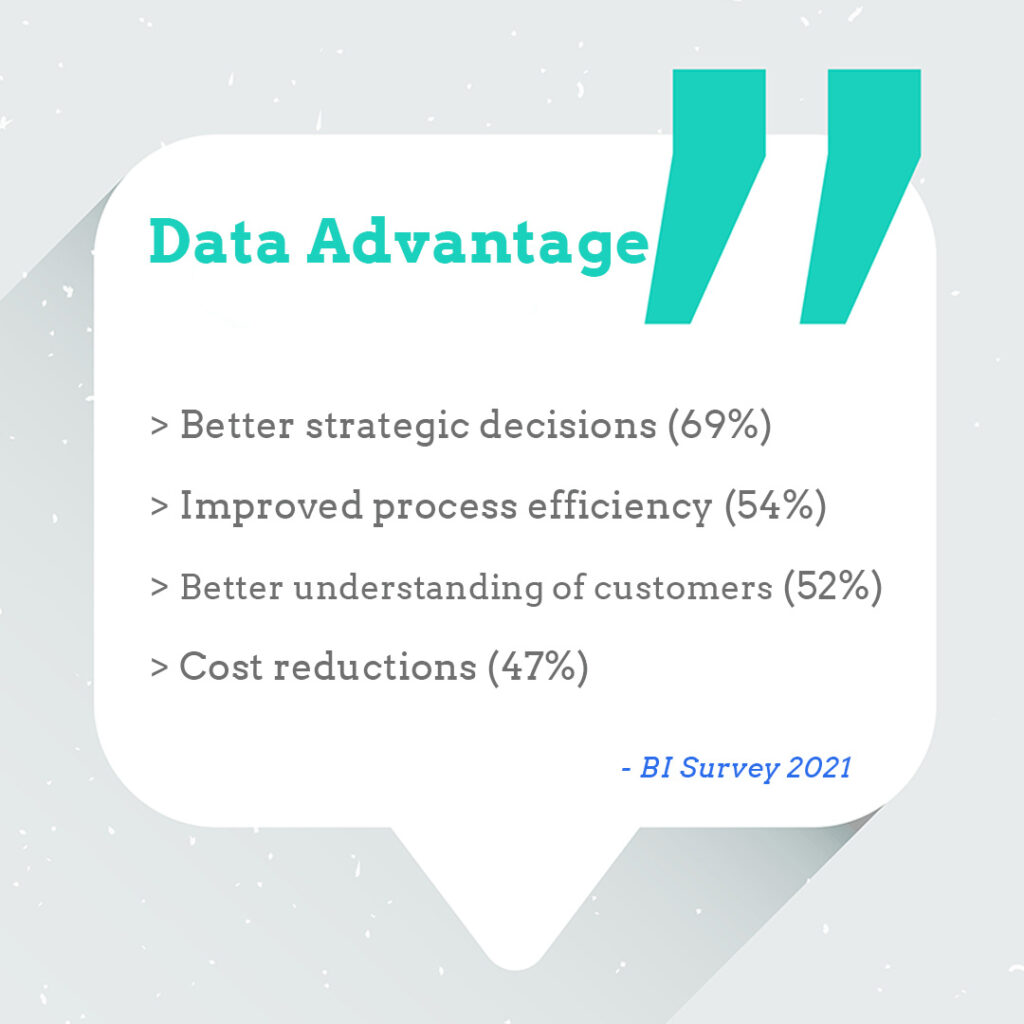Did you know that Kmart was the largest retail chain in the US in the 1970s? However, Walmart had a secret weapon at its disposal. Walmart used business analytics to grow from annual revenue of $15.9 billion to $32.6 billion in just three years. There is a multilayered need for business analytics in an organization. It is not just in terms of survival or growth, but it is also about unlocking new opportunities that remain hidden in data.
Contents
What is business analytics?
Business analytics is about leveraging data to create valuable and actionable insights. However, executives looked at analytics in a different way earlier. Young professionals may not be able to relate to this, but there was no charm in big data earlier. Perhaps, many firms considered the magnitude of data to be problematic. Storing managing and working with big data was very cumbersome. Therefore, some people even used the terms like ‘sludge of information age.’
However, things changed when advances in technology-enabled businesses to get into big data analytics.
Why do we need business analytics?

The main goal of Business analytics is to enhance the quality and confidence in decision making. In 2015 about 17% of companies were using analytics. However, this number increased to 53% in 2017. Subsequently, by 2021, only about 10% of North American and 19% of European companies said that they have no need for business analytics. Executives often cite some of these key reasons for adopting BI:
- Faster decision cycle
- Higher reliability in decision making
- Increased customer satisfaction, retention, value and loyalty
- Proactive strategy
- Higher profits and lower costs
Meeting business goals
One of the primary applications of business analytics is to help you reach your business goals. Business goals can be any operational or strategic metric for your organization. Tata Steel is one of the largest steel producers in India. One of the challenges for them was producing high-quality steel that was super-heated to a very specific temperature range. This required a highly optimized heating process. However, most of the engineers who worked on the blast furnace had a background in Mechanical Engineering. Nevertheless, this does not stop them from achieving their goal of increasing the operational efficiency and the output of high-quality steel in the plant. They undertook extensive training in data science and model building and used. This is to build models that help them in increasing the precision of their healing processes.
Facing the external threats
External threats are relevant enemies for all organizations. While some of these threads are clearly visible. Some others are not that apparent. Data mining techniques help us to identify these threats before they become unmanageable. Additionally, there are also some long-term threats like threats of competitors, social landscape, macroeconomic problems, global issues, and regulations. Business intelligence can provide us with timely insights to manage them effectively.
Grabbing business opportunities early
One of the factors contributing to increasing competition among firms is the interconnected world. In our contemporary, interconnected world, it is far easier for customers to acquire relevant information. Consequently, we may see faster and unpredictable customer churn. Any big PR scandal takes a direct hit at the company’s stock. Companies have lost billions over a tweet. Therefore, it is becoming increasingly relevant to tap into big data. However, social media data is highly unstructured and requires far more effort to mine than structured data like transactional data.
High-performance operations management
As we are moving towards industry 4.0, there is an increasing need of incorporating business intelligence into corporate strategy. Modern factories have a good share of robots performing actions alongside humans. Firms are replacing some of the jobs with process automation. Moreover, business intelligence also provides us with the necessary tools and techniques to tap into real-time data.
What can business analytics be used for?
Some of the vital applications of business analytics are:
- Supporting the decision-making process.
- Development of new products.
- Expansion into new markets.
- Monitoring internal data for performance
- Monitoring external data for threats.
- Enabling faster cycles in strategy
What are the skills required for business analytics?

Top management level
Managers at the top management level have got a very different managerial role compared to the mid-managers. Business intelligence for them is a highly effective input to their decision-making process. There are certain key areas where the top management level can focus on developing the skills. Firstly, top managers should understand the concept of the data ecosystem. The data ecosystem consists of not just machines but also people. Hiring, training, and developing the right resources to handle your business intelligence is not an easy task. The second critical area where top management has to intervene is in finding ways to turn insights into actionable strategies.
Mid management level
Mid managers can also chip in to provide some extremely useful ways of dealing with business intelligence. Firstly, they can find the sources of value for the organization. These sources can lie in the value chain. Moreover, they can also lie in the operational aspects of the business. Since mid-managers are the bridge between top managers and low-level managers, they also have another important role to fulfill. They have to ensure the execution of the business intelligence projects. There are different ways to brainstorm for managing projects. However, the guiding theme should be clear from the very start.
Operative/Supervisory level
Lastly, but importantly, the operative managers have the critical responsibility for both the input and output stages of business intelligence. They are critical resources that help convert data into information. The analytical models are grounded in assumptions that are best understood by the foot soldiers of the corporate army. Therefore, it is imperative to understand where they stand in the organizational need for business analytics.
